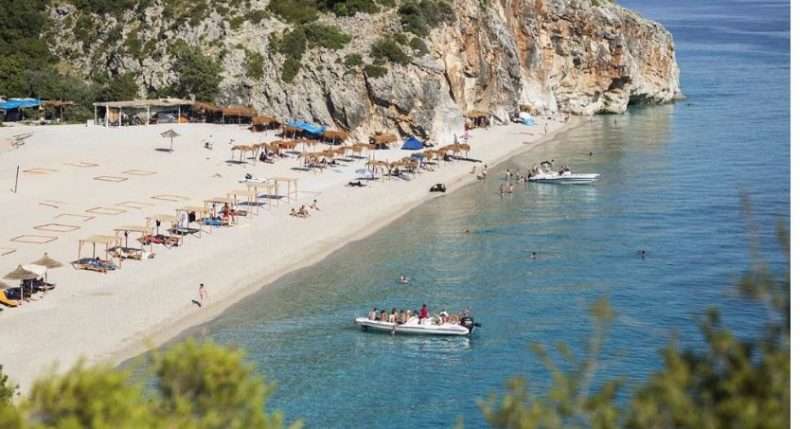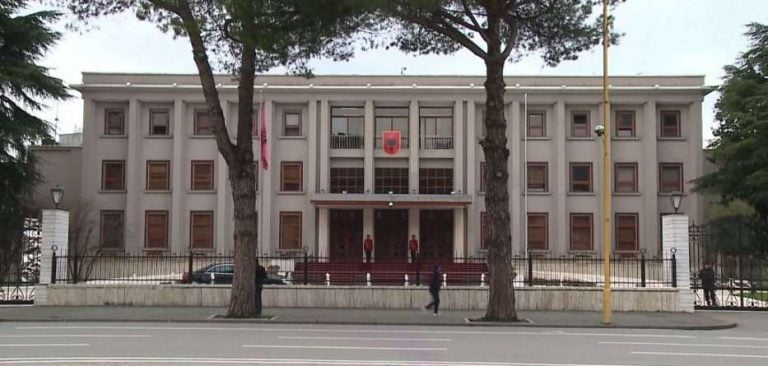You can dance all night
Roy Ayers, Todd Terje and The Black Madonna are all at the new week-long boutique festival Kala, taking place in Albania for the first time on Dhërmi Beach from Wednesday. Alongside three stages playing disco, jazz and techno, there’s a focus on wellness, with sunset yoga, beach massages, kayaking and rafting in the 16-mile Osumi Canyon. If you fancy a mad dash east, tickets are still available at a very reasonable £165 (kala.al) or contact the festival for packages that include accommodation.
Or bliss out on the beach
You could spend a lifetime exploring Albania’s 265 miles of coastline but in lieu of a lifetime, head to the riviera. Stretching from Sarandë in the south to Vlorë in the north, much of this region was a military zone during communist times and it’s largely undeveloped. What it lacks in luxury resorts it makes up for in secluded beaches and coves, with informal campsites scattered along the coast. Rentinalbania.com has a range of holiday homes on the riviera starting at around £30 per night.
Discover an ancient world
The Unesco World Heritage Site of Butrint is one of Albania’s most important archaeological sites, with ruins dating back to the eighth century BC. The central city of Berat, also Unesco-listed and around five hours away, is filled with Byzantine churches and Ottoman mosques linked by ancient cobbled streets. Exodus Travels has a ten-day trip (£899, exodus.co.uk) taking in both sites and Voskopoja Village, also known as the artists’ village, due to its many painters.
Relive postwar troubles
The rolling landscape is studded with bunkers from the postwar era. The biggest — the atomic bunker belonging to former dictator Enver Hoxha — opened in 2014 as Bunk’Art 1, a museum on the history and secrets of his regime. This was followed by Bunk’Art 2 in 2016 (bunkart.al). You could also visit the sinister House Of Leaves, a vine-clad villa in the capital Tirana that was once the HQ of the Albanian secret service and is now open as the Museum of Secret Surveillance (£4.89, muzeugjethi.gov.al) and, the island of Sazan, a derelict military base off the coast of Vlorë.
Take cocktails in colourful Tirana
The capital is increasingly metropolitan, with a growing coffee and arts scene. When prime minister Edi Rama came to power in 2013 there was little money to repair the city. Instead he had the idea of painting the town red — almost literally — and the drab communist-era blocks are now candy-coloured. Head to Blloku district, once out of bounds to all but the communist party elite and now one the coolest neighbourhoods, with its bars and cafés. Radio Bar, full of antique radios, serves classic cocktails (from £3.50, facebook.com/radiobartirana).
And feast on tasty plates
Albania’s Mediterranean climate means it’s blessed with natural ingredients, so expect flavoursome kebabs, zingy salads and fresh seafood. A gastronomic revolution is under way, led by chefs such as Bledar Kola, who trained at Nobu and is championing traditional dishes influenced by the country’s Ottoman, Italian and Greek heritage at his restaurant Mullixhiu in Tirana. Try the succulent beef cheek with a side salad of pumpkin, persimmon and dried tomatoes (mains from £7, mullixhiu.al).
Or you can venture out into high mountains and deep lakes
In the north, the Albanian Alps possess a wild kind of beauty. The region’s history is wrapped up in ancient blood feuds and folklore, and agricultural life remains unchanged for centuries — don’t be surprised to see farmers ploughing with ox and yoke. In the east of the country, the crystal clear waters of Lake Ohrid are like something from paradise. Down in the south, most tourists head to the Macedonian side for Ottoman architecture and Byzantine churches but don’t miss Pogradec city for a taste of local life by the sea./metronews






















